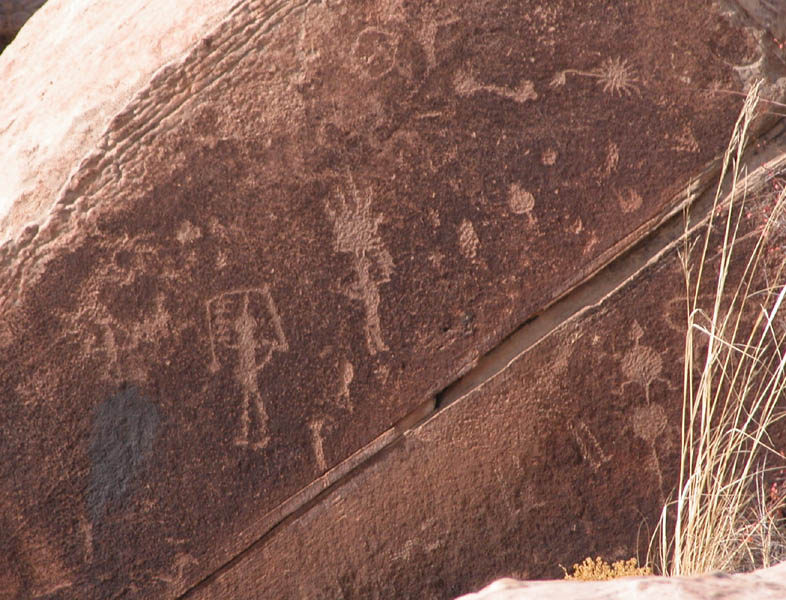A Short Stroll into History



Puerco Pueblo was the home to people who lived between the Mogollon / Zuñi to the south and the Anasazi / Hopi to the north. I am still then unable to figure out exactly who this was. It is called Puerco Pueblo because it overlooks the Puerco River. The pueblo was occupied from about 1250 AD to 1380 AD.
This site was believed to be one story high with about 100 rooms surrounding a central plaza where several rectangular kivas existed. It was still active after Chaco Culture Center and Mesa Verde were abandoned. The people farmed corn, beans, squash, and cotton. The calendar was also important to farming, and the summer solstice is recognized by a spiral petroglyph behind the pueblo that receives light in its center as it peers around a boulder on that day.
Plenty of Petroglyphs and Scattered Artifacts



This is a nice site and a nice little trail that winds around and through the ruins and offers views of the remains of the rooms, some petroglyphs, an occasional remain of pottery or tool shards, and a beautiful panorama surrounding the site. The path is specified at .3 miles and is pretty flat.



The pottery shows influence from neighboring tribes, including the Mogollon from the south and the Western Pueblo who, despite their name, were to the south of Puerco Pueblo.
A Closer Look
There are several large panels of petroglyphs. We provided these two photos that you can mouse over to see a detail appear on the right. One of the panels had an interesting image of a bird that appears to have a person in its beak. Another has two people carrying a similar item but they differ with one having an item over their head and the other has something surrounding theirs.
This tiny walk was densely packed with history. Elements of art, tools, pottery, and the structure made this an overall perfect trail for us. Even though it was short, it did take us a while as there was a lot to look at, and we do enjoy looking at the ground in the bushes to see if we can spot a shard of pottery or something interesting left behind. I hope others get to find the little piece of pottery we photographed above for years to come, or it may return to the earth and others might appear for our next visit.
For more images and information, we found this site to have nice photos: ScienceViews.com


